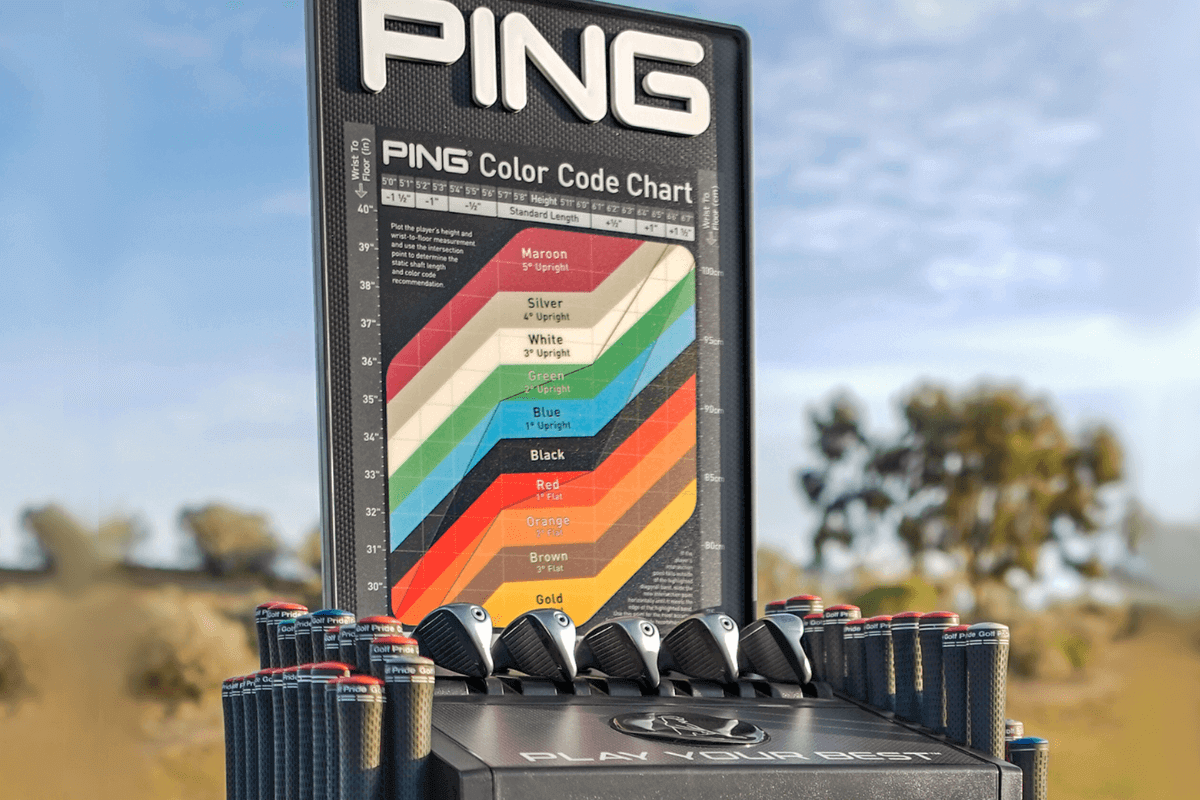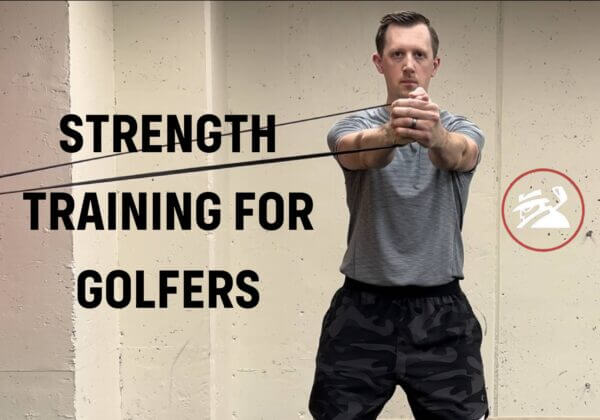Golf ball fitting is complex.
Kinda.
A bit ago, I posted a thread on Twitter addressing the topic. The text of this post comes mostly from that. I made a few changes here or there to try and add a bit of clarity but, frankly, instead of continuing to dumb down ball fitting, I thought it was time we collectively acknowledged the complexity.
That means I can’t provide easy answers. I can’t tell you what ball to play (unless you’re Scott Beckwith, who should definitely play a first-generation OnCore ELIXR) but I’m hoping I can at least get you thinking about golf ball fitting in a more complete way.
And so here we go.
Is golf ball fitting much different than club fitting?

For all the talk of complexity, fitting for golf balls isn’t much different than fitting for golf clubs. The devil is in overcoming the bad information golfers have been fed for years (e.g., you need match compression to your swing speed) and the limitations of most fitting environments.
When fitting for clubs, most fitters will key on ball speed, trajectory (launch angle, peak height and descent angle) and spin.
While “feel” is often a bigger talking point with a ball than with clubs, the key metrics for a ball fitting are the same as they are for clubs.
One ripple is that a proper ball fitting is a bit like getting fitted for a full bag of clubs. You want to see how it performs around the green (short wedges), on approach shots (irons) and off the tee (driver).
It’s elementary
The right ball for you will perform well in every situation and that’s where the complexity comes in. That’s problematic. More than a decade of writing about golf equipment has taught me that golfers seldom embrace complexity.
It’s hard to fault ball makers too much for this. It’s not much different than the approach shaft companies have taken. Conversations around torque, EI profiles and stiffness in specific parts of the shafts are infinitely more meaningful than how things are often described but, again, it’s complex and so shafts are either low-, mid- or high-launch and that’s always paired with low or mid spin.
(Weird how nobody ever describes their shaft offering as high spin, right? I digress.)
Likewise, club fitting sometimes gets simplified because, even if golfers don’t know anything else about their swing, they have an idea of how fast they swing.
I suspect that’s exactly why the internet is filled with references to “the right ball for your swing speed.” It’s a simple idea that, in theory, allows you to match something you know (your swing speed) with a ball with a compression value that will work for you.
The problem is that’s not how it works. That’s not how any of this works.
The mythology of compression-based ball fitting
At the risk of repeating myself for the 10,000th time, there is no “right compression” for your swing speed. Get that thought out of your head and don’t ever let it back in.
Despite what you’ve been led to believe, slower swing-speed players very often benefit from higher-compression balls.
With few exceptions, firmer balls spin more and, very often, slower players are lacking spin. Fun fact: Titleist fits more golfers into Pro V1x than any other ball in its lineup.
Why?
Because the Pro V1x launches relatively high and spins and, as it turns out, many slower swing speed players have trouble hitting the ball in the air and generating spin.
Would a slow swing player be better off with a Chrome Soft X than a Chrome Soft or with a TP5 instead of a Tour Response?
In many cases, yes. Yeah, I know: “But I don’t like the way it feels.”
Adapt.
What about faster players?
It is absolutely true that most faster players will lose driver distance with a low-compression “soft” golf ball due to the core over-compressing at higher speed. That said, there is an element of distance that’s tied to spin and so there is a small percentage of high-speed, high-spin swingers (call it 2,800-plus rpm with the driver) who can benefit from the low spin benefits that come with a low-compression ball.
The same group may also benefit from a lower-spinning high-compression ball like the Pro V1x Left Dash—a good bit of that boils down to the ideal trajectory.
A proper ball fitting can help you sort that out.
Off irons, low-compression balls will often be a bit longer (largely due to the low spin characteristics). Worth a quick mention: low-compression balls are invariably low-spin. It’s the consequence of all the layers needing to be at least somewhat soft.

As a quick reminder, spin in the golf ball is a result of having a soft layer over a firmer one. The greater the difference in firmness between two adjoining layers, the more the ball will spin. When everything needs to be kinda soft (as they do in a low-compression ball), you don’t get the same firmness difference between layers and you get less spin because of it.
Most low-compression “soft” balls also offer higher trajectory. Higher flight with steeper descent angles is the lever that gets pulled to offset the low spin properties. Without the higher flight, low-spin (soft) balls would be unplayable for most.
There are exceptions. AVX tends to fly lower than other lower-spin balls. It’s not great for everyone but it’s the exception that proves the rule. If you swing fast and hit the ball high with too much spin, AVX might be ideal.
Nope, there’s still no right ball for your swing speed
So ultimately, compression provides clues about a ball’s performance but it’s by no means the definitive fitting variable. You should not be trying to match your swing speed to the right compression. At least not in a vacuum.
Fitting a ball by compression alone would be like getting fitted for irons (or even wedges) and looking at nothing but ball speed. No fitter worth his salt would ever do that.
A good ball fitting focuses on flight and spin. The recommended approach is to start at the green and work back to the tee. Basically, just make sure greenside (15-35 yards) spin is adequate and go from there.
FYI, ionomer/Surlyn spin rates simply can’t match urethane. If greenside spin matters, you need urethane.
A good rule of thumb is to fit the ball to your irons and fit your driver to the ball. So, again, if you’re focused exclusively on compression and ball speed off one club, you’re missing the plot. The trajectory and spin properties need to be right (or as right as they can be) throughout the bag.
With that in mind, my advice is to play the fastest ball you can find off the driver that delivers the proper flight and spin characteristics through the rest of the bag.
You should definitely not be trading the performance you need for the feel you want. If you must, you can trade a little speed for the feel you like but don’t compromise on trajectory and spin because you like the way a ball feels.
Soft is slow, but is it straight?
As an aside, a lower-spin ball will typically be straighter off the driver. It’s part of the reason why soft balls are sometimes marketed as more forgiving. For golfers who need straighter flight, every little bit helps but, at the same time, in terms of actual yards offline, it’s not a lot.
It’s why when ball manufacturers talk about how much straighter their golf balls are than a competitor’s, they use percentages. Four yards straighter 250-plus yards down the fairway isn’t nearly as impressive as “40% Straighter!”.
With a low-compression ball, you’re also going to be giving up spin in the iron game. Again, a little straighter but not ideal for holding greens especially if you don’t have the speed to hit the ball high enough to achieve a steep descent angle.
You need to see it fly

What that means is that without the help of a well-designed trajectory model for every golf ball in the fitting matrix, you can’t properly fit a ball indoors. In that situation, you’re effectively normalizing dimple performance across all balls and that’s just not real.
Peak height, how far down range the ball reaches that height and how long the ball actually stays in the air as well as how the ball reacts to wind are significantly influenced by the actual dimple pattern.
But I’m not good enough
Before I wrap this up, I want to address one of the things I hear over and over again when I talk about golf ball fitting. Golfers love to say, “I’m not good enough to tell the difference.”
How many of you in the “I’m not good enough” crowd would also say, “I’m not good enough to tell the difference between one driver and another”?
Are differences in ball performance more subtle? Perhaps, even likely, but here’s what I’d say. We’re all familiar with the philosophical question, “If a tree falls in the forest and no one hears it, did it make a sound?”
Ball performance is a bit more like, “If a tree falls in the forest and nobody sees it, did it still fall down?”
Yes, yes, it did. My point is that whether you’re good/consistent enough to tell the difference almost doesn’t matter. The differences between balls are unquestionably real and even if you’re “not good enough” to see them, every golfer can appreciate (and benefit from) them.
In summary …

So yeah, ball fitting is complex, it requires specific conditions to be done properly and attempts to simplify the process have led to a ton of misinformation that gets repeated over and over again.
As the idea of ball fitting gains momentum, hopefully that will change and it will become easier for golfers to get properly fitted for their ball.
Until then, PING’s Ballnamic tool isn’t a bad place to start, especially if you can’t personally test the 40 or so balls that could be right for you. Our semi-annual ball tests (we’re in the planning phase of the ’23 test) should provide insight as well. And, of course, there’s also a quality/consistency element at play which is where #BallLab comes in.
That’s a topic for another day.














Richard Jacobs
7 months ago
Swing speed is I had to Cleveland to hybrid half of tea and I hit that as far as my buddies hit their drivers and I play Wilson triad ball. I’ve tried other balls and I try a lot of balls but I keep coming back to the Wilson try it that’s my story and I’m sticking to it.
R Jacobs
7 months ago
Sorry the voice text went haywire! I don’t know what my swing speed is. I hit a Cleveland 2 hybrid off the tee.